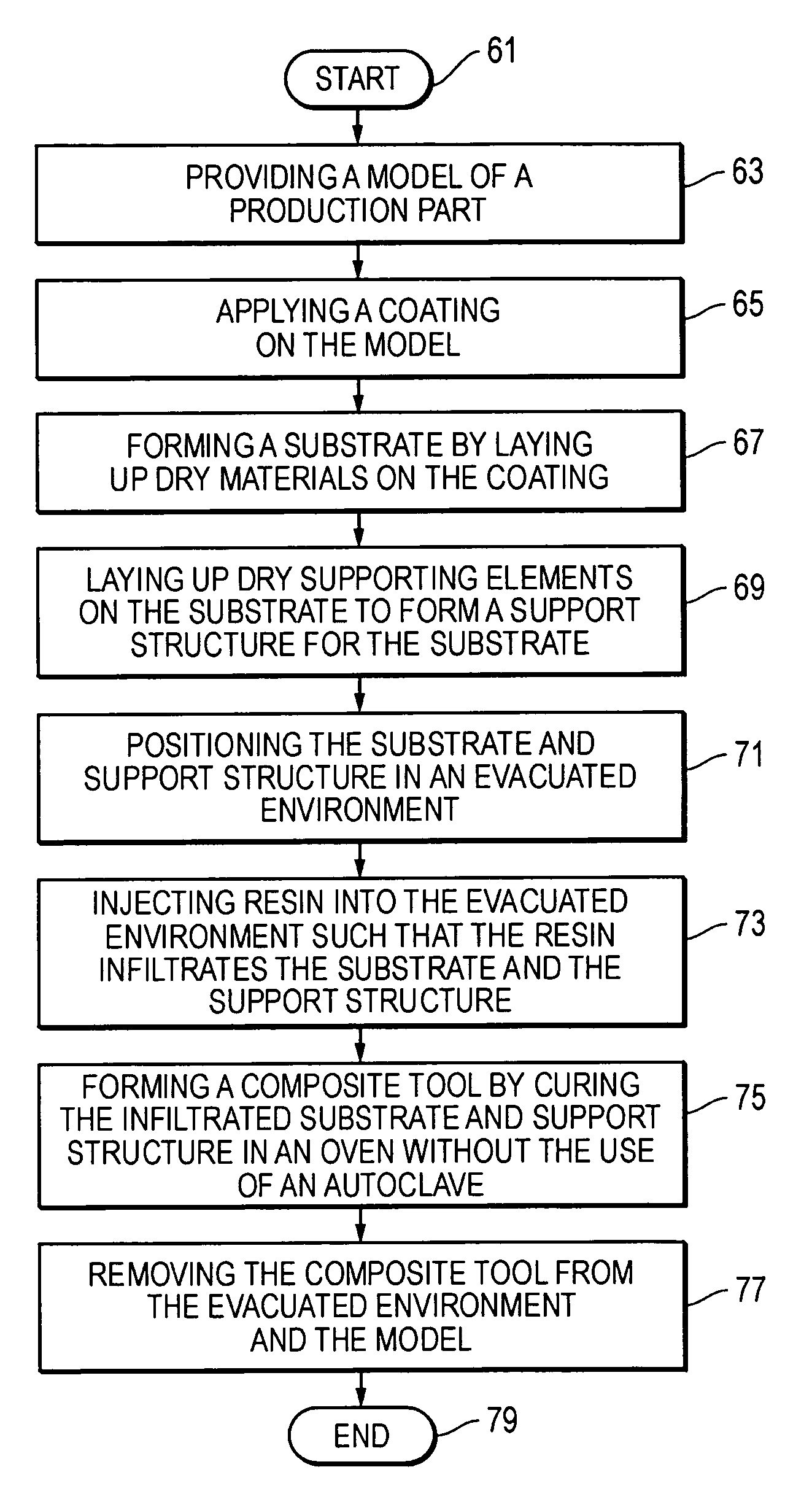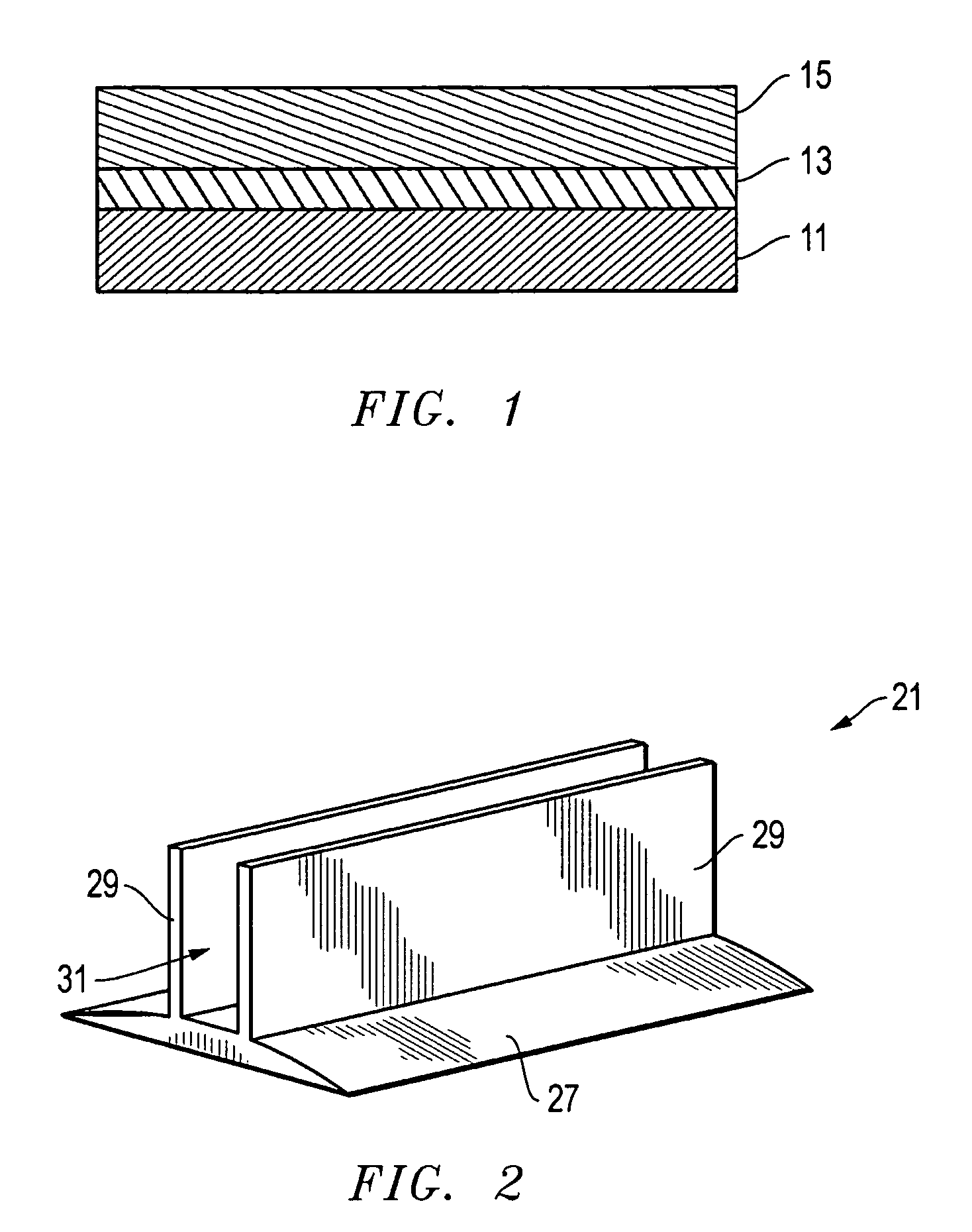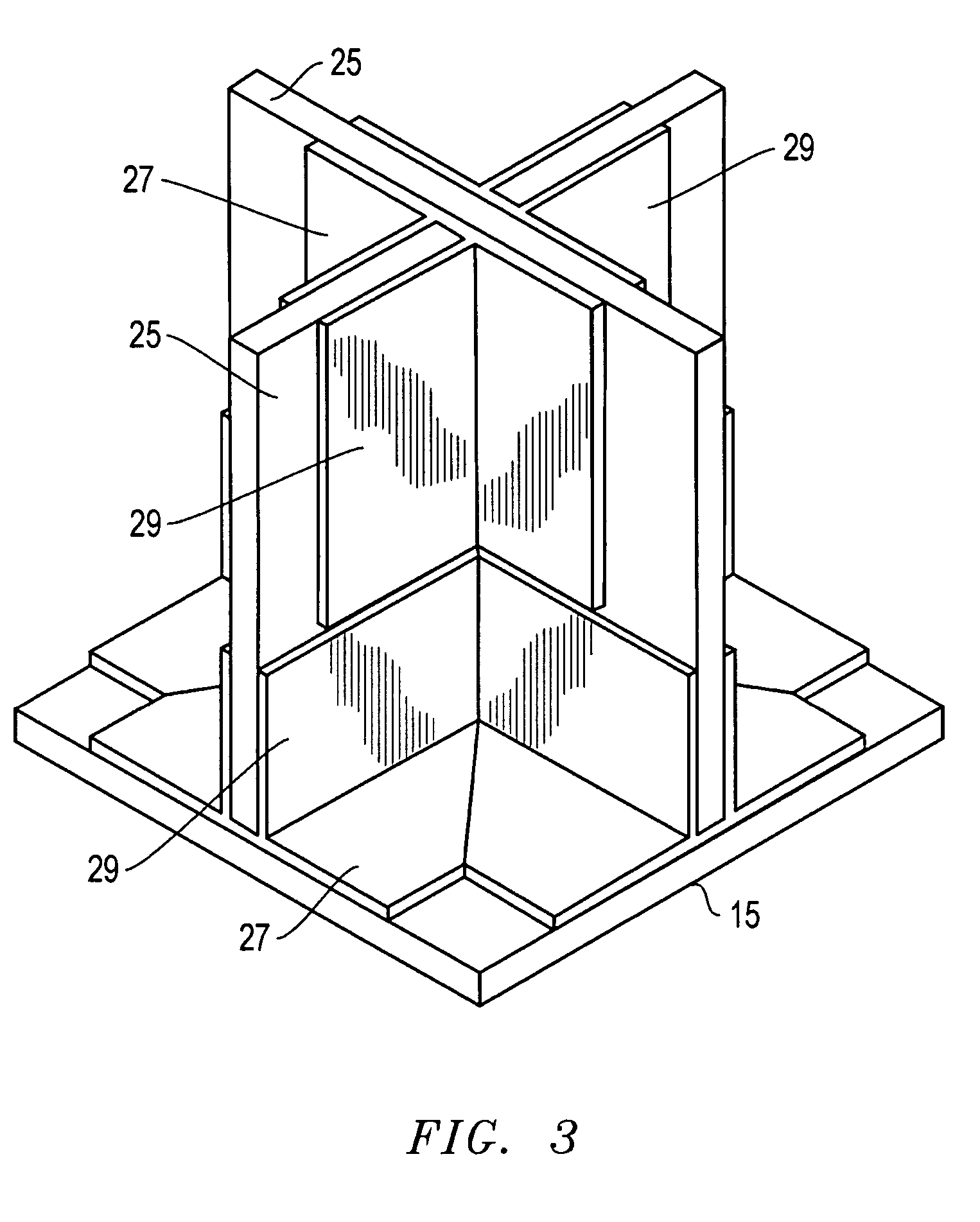System, method, and apparatus for production-worthy, low cost composite tool fabrication
a composite tool and low cost technology, applied in the field of composite tooling, can solve the problems of high material and labor costs, impede production use, and lack of typical composite tooling, and achieve the effects of reducing labor costs, reducing cost, and eliminating autoclave tim
- Summary
- Abstract
- Description
- Claims
- Application Information
AI Technical Summary
Benefits of technology
Problems solved by technology
Method used
Image
Examples
Embodiment Construction
[0019]Referring to FIGS. 1-6, various embodiments of forming composite tooling are disclosed. In one embodiment, the method includes providing a model 11 (FIG. 1) of a production part. A ceramic-filled face coating 13 is applied to the contact surface of the model 11 in a liquid form. When cured, the coating 13 has a hardness that exceeds that of a substrate 15 that ultimately forms the composite tool. In one embodiment, the substrate 15 is formed by laying up dry materials, such as woven graphite, on the coating 13. These materials are substantially dry and are not pre-impregnated with resin or the like.
[0020]In a subsequent step, dry supporting elements 21 are laid up on the substrate 15 to form a support structure 23 (see FIG. 4) for the substrate 15. Like the dry materials of substrate 15, the dry supporting elements 21 are substantially dry and are not pre-impregnated. These designs are more fully disclosed in U.S. Pat. Nos. 6,374,570 and 6,520,706, which are incorporated herei...
PUM
| Property | Measurement | Unit |
|---|---|---|
| depth | aaaaa | aaaaa |
| temperature | aaaaa | aaaaa |
| temperatures | aaaaa | aaaaa |
Abstract
Description
Claims
Application Information
 Login to View More
Login to View More - R&D
- Intellectual Property
- Life Sciences
- Materials
- Tech Scout
- Unparalleled Data Quality
- Higher Quality Content
- 60% Fewer Hallucinations
Browse by: Latest US Patents, China's latest patents, Technical Efficacy Thesaurus, Application Domain, Technology Topic, Popular Technical Reports.
© 2025 PatSnap. All rights reserved.Legal|Privacy policy|Modern Slavery Act Transparency Statement|Sitemap|About US| Contact US: help@patsnap.com



